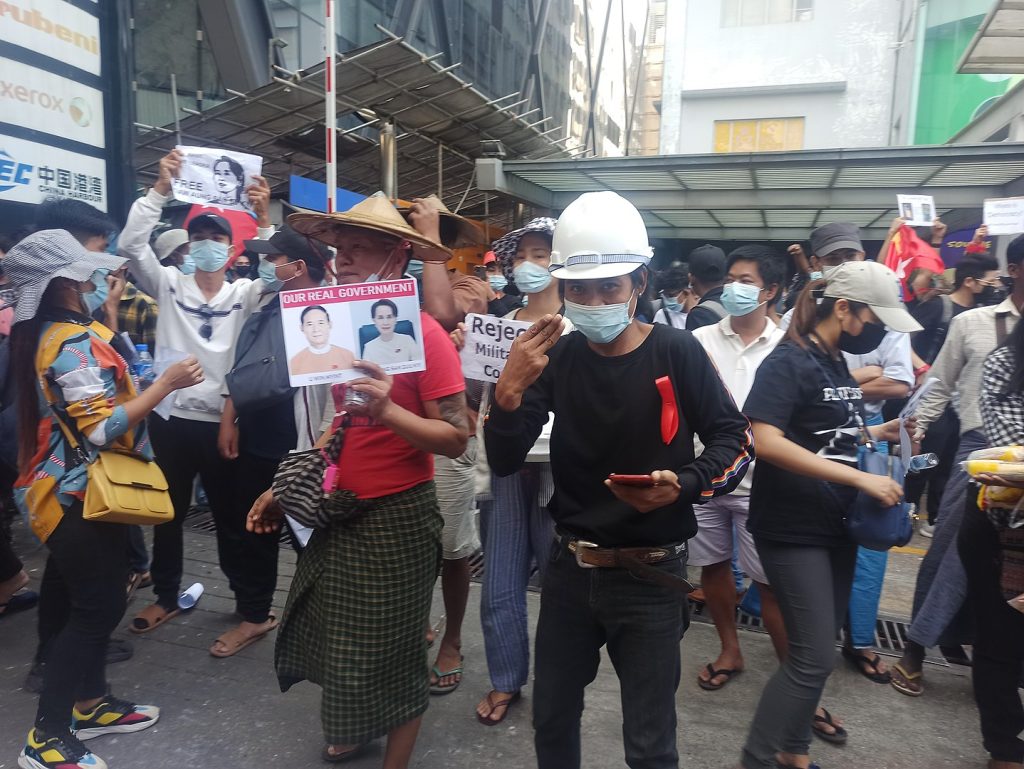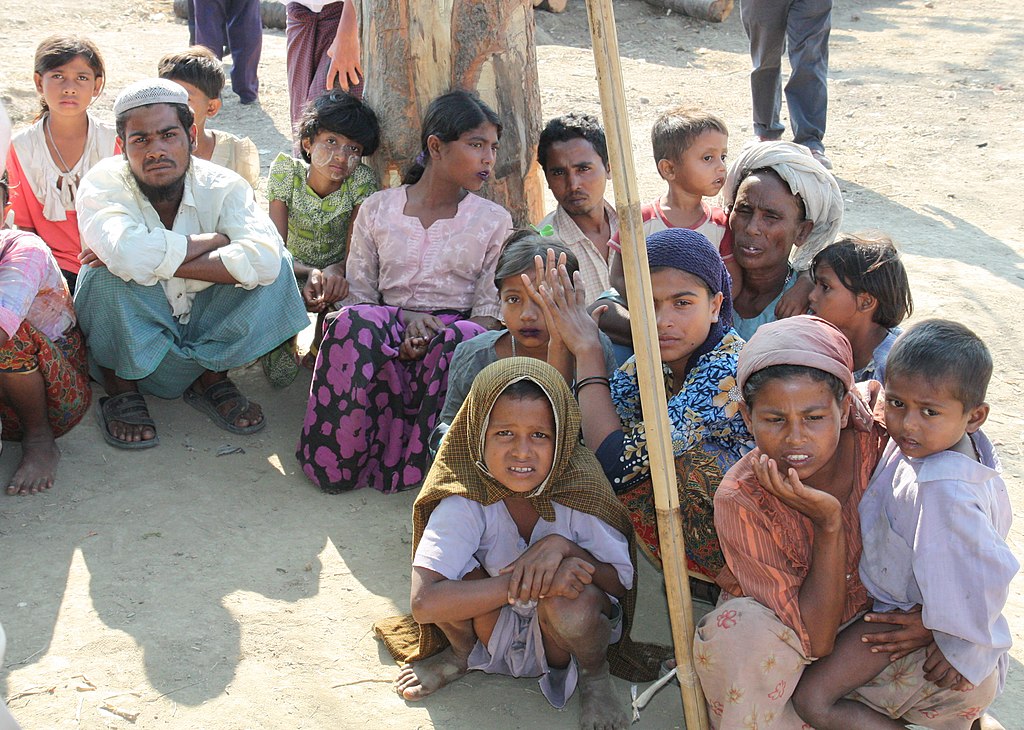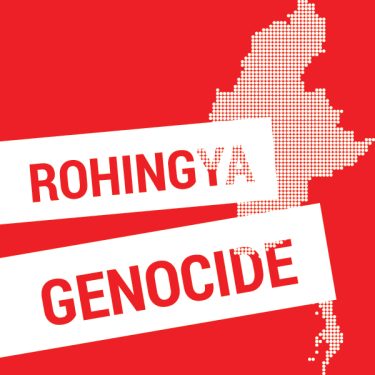
The Spring Revolution signifies a grassroots commitment where Myanmar people are the primary source of strength, resilience, and determination. The revolution transcends various boundaries and is sustained by the unwavering unity of Myanmar people; a solidarity exemplified by a collective effort to provide essential support for logistics, financial contributions, or assistance from both people within Myanmar and its diaspora.
Ground Realities: The Continuation of a Home-Grown Revolution
In response to the National Unity Government (NUG)’s declaration of “People’s Defensive War” on September 7, 2021, a multifaceted collaboration has evolved among the Ethnic Resistance Organizations (EROs), NUG, and People’s Defense Force (PDFs). This collaboration has been consistently coordinated to enhance the security sector and, consequently, strengthened the operational command and control. 1 The most significant milestone is the establishment of the Central Command and Coordination Committee (C3C), which has gradually become more inclusive and progressive. Over the course of armed resistance, six regional command patterns have emerged: joint command, parallel coordinated command, integrated command, bilateral coordinated command, NUG command, and ERO command.

Momentum has surged to new heights following the success of Operation 1027 led by the Brotherhood Alliance. The alliance, comprising of the Arakan Army (AA), Myanmar National Democratic Alliance Army (MNDAA), and Ta’ang National Liberation Army (TNLA) delivered a significant blow to the junta within a month by having “captured over 100 regime positions and gained control of several towns, including key border crossings with China.” 2 Operation 1027 is jointly participated by some battalions from Bamar People’s Liberation Army (BPLA), the People’s Liberation Army (PLA), and the Mandalay People’s Defense Force (MPDF). In addition to the alliance, anti-regime operations are expanding to a nationwide level by the “PDFs under the civilian NUG, the Karenni Nationalities Defense Force (KNDF), Karenni National People’s Liberation Front (KNPLF), the Karenni Army (KA),” 3 the Karen National Union (KNU), and the Kachin Independence Army (KIA). By the end of January, a total of 36 towns were seized and controlled by Brotherhood Alliance and Spring revolution forces across the Northern Shan, Karen, Karenni, Rakhine, Chin and Sagaing.
Game Changers: China, the EROs Governance, and the SAC’s Conscription Law
At a time of gaining momentum against the military, China helped broker a temporary ceasefire agreement between the Brotherhood Alliance and the military’s State Administration Council (SAC) called the Haigeng Agreement in January. This agreement effectively prevented the military from losing more territory up to Southern Shan and further down, while allowing MNDAA and TNLA to improve governance and administration on the land they had reclaimed in Northern Shan.
The NUG, the Chin National Front (CNF), the Karenni National Progressive Party (KNPP) and the KNU have issued a joint position statement at the end of January outlining their six shared goals to abolish the military dictatorship, ensure all armed forces operate under the command of an elected civilian government, and quash all attempts to reinstate the provisions of the military-drafted 2008 constitution. 4 It also offers the SAC’ leadership to unconditionally accept six political objectives for ending military rule towards a peaceful power transition. While the Northern military theater in Myanmar remains quiet for the moment, the AA’s successful seizure of key towns and several military outposts across Rakhine marks the latest territorial advancement and installation of autonomous governance. Furthermore, the recent enlistment of the Shan State Progress Party/Shan State Army North (SSPP/SSA) into the Spring revolutionary forces has added pressure on the SAC.
Amidst the backdrop of the China-driven Haigeng ceasefire agreement, the junta has resorted to its latest desperate move: enforcing the 2010 People’s Military Service Law, which mandates the conscription of men aged 18 to 35 and women aged 18 to 27. As an instant reverse effect, there has been a notable surge in the enlistment of youth into the PDF and EROs. This stands in stark contrast to the military’s objective of recruiting 60,000 soldiers annually. The law indicates the SAC’s heavy loss of its forces and disregard for the well-being of citizens, pushing the country toward a full-scale war scenario that will destroy the future of young generations. It also foretells inevitable civilian fatalities resulting from the military’s impending war crimes, crimes against humanity and humanitarian disasters, exacerbating the lives of IDPs, regional refugee flows, and the contiguous brain drain.
Future Considerations: Establishment of an International Criminal Tribunal for Myanmar
Apart from an urgent need of international support for humanitarian crises, there is also a need to establish an International Criminal Tribunal for Myanmar (ICTM) to address deeply rooted issues for the long-term future. Those issues include the Rohingya genocide, other atrocities in the ethnic regions, and ongoing bloody crackdown by the military till date. The junta has been responsible for violating the principles of international law since its first coup d’état in 1962. By official accounts and available evidence, the 2021 coup regime has violated every one of these international principles, most of which amount to crimes against humanity and war crimes. 5
Yet, there has been no sign of establishment of an ICTM. Although the international community’s response has included strongly worded resolutions, boycotts, and partial sanctions, they are not enough to prevent human rights violation or protect the victims. Any interventions are however unlikely to be made on the grounds of respecting sovereignty and right to self-determination repeatedly used by authoritarian regimes and their sympathizers.

In the case that the international community could present a prima facie case against the SAC sufficient to establish an international criminal tribunal, the SAC would be brought to justice as war criminal. The creation of ICTM would also ensure that future regimes adhere to the UN Charter and the principles of international law and be held accountable for it. However, making a case for such a tribunal faces hurdles of determining whether the SAC’s crimes present a threat to international peace and security. The 2021 coup has caused negative spillover effects in other countries. As of November 2023, UNHCR estimates that there are 1,858,600 IDPs in Myanmar displaced since the coup. 6 The continuation of the SAC’s illegitimate rule and atrocities as well as their armed clashes are thus expected to destabilize the security of the neighbouring region even further and worsen the humanitarian crisis.
The rising momentum of a united Spring Revolution holds a promise of an inclusive democracy in the future; nonetheless, it is crucial that this future is realized alongside the establishment of the ICTM. It represents a long-term commitment to ending military impunity as well as upholding the principles of justice, human rights, and democracy, for which Myanmar people have long been fighting for.
Chosein Yamahata
Graduate School of Policy Studies, Aichi Gakuin University
KRSEA Issue 38, June 2024
Banner: Myanmar, 2021. Protestors and police at Hledan Yangon. Wikimedia Commons
Notes:
- Helen Regan and Kocha Olarn, “Myanmar’s Shadow Government Launces ‘People’s Defensive War’ against the Military Junta,” CNN, September 7, 2021, https://edition.cnn.com/2021/09/07/asia/myanmar-nug-peoples-war-intl-hnk/index.html (accessed November 29, 2023). ↩
- Morgan Michaels, “Operation 1027 Reshapes Myanmar’s Post-coup War,” International Institute for Strategic Studies, November 2023, https://myanmar.iiss.org/updates/2023-11 (accessed November 29, 2023). ↩
- Nayt Thit and Nora, “Myanmar Junta Continues to Suffer Defeats a Month Into Operation 1027,” The Irrawaddy, November 27, 2023 https://www.irrawaddy.com/news/war-against-the-junta/myanmar-junta-continues-to-suffer-defeats-a-month-into-operation-1027.html (accessed November 29, 2023). ↩
- The Irrawaddy, “Myanmar’s NUG, Three Revolutionary Groups Issue Joint Position Statement,” January 31, 2024, https://www.irrawaddy.com/news/burma/myanmars-nug-three-revolutionary-groups-issue-joint-position-statement.html (accessed January 31, 2024). ↩
- Independent Investigative Mechanism for Myanmar, “Press Release: War Crimes by Myanmar Military are More Frequent and Brazen—Myanmar Mechanism Annual Report,” United Nations, August 8, 2023 https://iimm.un.org/press-release-war-crimes-by-myanmar-military-are-more-frequent-and-brazen-myanmar-mechanism-annual-report/ (accessed November 29, 2023). ↩
- United Nations High Commissioner for Refugees, “UNHCR Regional Bureau for Asia and Pacific (RBAP) Myanmar Emergency Updates as of November 2023,” UNHCR, December 15, 2023 https://reporting.unhcr.org/myanmar-emergency-regional-update-6584 (accessed December 27, 2023). ↩

